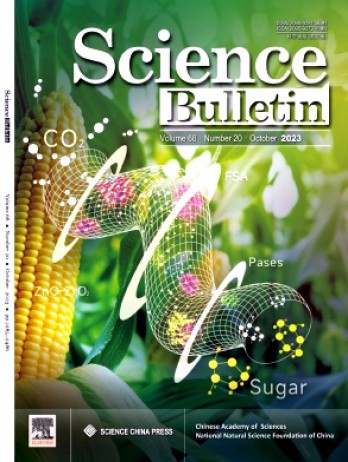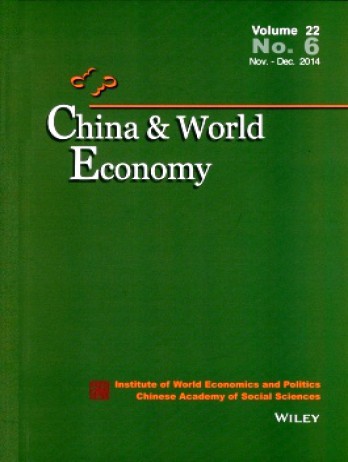想在《Science China Chemistry》雜志實現(xiàn)快速發(fā)表,需要遵循一定的策略和步驟。
以下是一些建議,具體策略如下:
1.?選擇合適的期刊
了解期刊要求:《Science China Chemistry》雜志要求投稿內(nèi)容與科技領(lǐng)域相關(guān),確保論文主題符合雜志的定位,主要欄目有快報、評述、論文等。
關(guān)注審稿周期:《Science China Chemistry》雜志的審稿周期預(yù)計:預(yù)計1-3個月。
2.?提高論文質(zhì)量
內(nèi)容質(zhì)量:確保論文內(nèi)容新穎、觀點明確、數(shù)據(jù)可靠,避免與已有文獻(xiàn)重復(fù)。
嚴(yán)格按照《Science China Chemistry》雜志投稿要求準(zhǔn)備稿件:
Manuscript submission
Please provide in a cover letter the background, innovative and scientific value of the work presented in the manuscript, and authors’ publications related to this work. The detailed contact information of the first author and corresponding author is re-quired. (Please promptly inform the editorial office of any change of contacting emails and addresses.) The authors may
recommend 3–8 qualified reviewers and/or request the exclusion of specific reviewers. An informative cover letter is considered helpful for editors and reviewers to make evaluation of the sub-mitted manuscript.
Duplicate submission is forbidden and unethical. In such cases, the journal will inform the institution of the authors and the relevant journal(s).
Poor English expression of a submitted manuscript may lead to rejection.
Ethical responsibilities of authors
This journal is committed to upholding the integrity of science and the scientific record. As a member of the Committee on Publica-tion Ethics (COPE), the journal will follow the COPE guidelines on how to deal with potential acts of misconduct.
Authors should refrain from misrepresenting research results which could damage the trust in the journal and ultimately the entire scientific endeavor. Maintaining integrity of the research and its presentation can be achieved by following the rules of good scientific practice, which includes:
1.The manuscript has not been submitted to more than one journal for simultaneous consideration.
2.The manuscript has not been published previously (part-ly or in full), unless the new work concerns an expansion of previous work. (Please provide transparency on the re-use of material to avoid the hint of text-recycling (“self-plagiarism”).)
3.A single study is not split up into several parts to in-crease the quantity of submissions and submitted to var-ious journals or to one journal over time (e.g., “sala-mi-publishing”).
4.No data have been fabricated or manipulated (including images) to support the conclusions. Upon request au-thors should be prepared to submit relevant documenta-tion or data in order to verify the validity of the results. This could be in the form of, e.g., raw data, samples, and records.
5.No data, text, or theories by others are presented as if they were the authors’ own (“plagiarism”). Proper acknowledgements to other works must be given, in-cluding material that is closely copied (near verbatim), summarized and/or paraphrased. Quotation marks are used for verbatim copying of material, and permissions need to be secured for material that is copyrighted.
Important note: The journal may use software to screen for plagiarism.
6.Consent to submit, including each version of the paper and any change in authorship, has been received from all co-authors and responsible authorities at the institute/ organization where the work has been carried out before the work is submitted or re-submitted for publication. In addition, authorship changes or the order of authors are not accepted after acceptance of a manuscript. Requests to add or delete authors at the revision stage or after publication is a serious matter, and may be considered only after receipt of a written approval from all authors and detailed explanation about the role/deletion of the new/deleted author. The decision whether to accept the change rests with the Editor-in-Chief of the journal.
7.Authors whose names appear on the submission have contributed sufficiently to the scientific work and there-fore share collective responsibility and accountability for the results.
3.?優(yōu)化投稿流程
網(wǎng)絡(luò)投稿:通過《Science China Chemistry》雜志的官方網(wǎng)站進行投稿,確保所有信息填寫準(zhǔn)確。
快速通道:部分期刊提供快速通道服務(wù),可以縮短審稿和發(fā)表周期,但通常需要額外付費。
4.?積極應(yīng)對審稿意見
及時關(guān)注審稿進度、與審稿人溝通、耐心等待錄用通知,通過遵循這些建議,作者可以提高論文的發(fā)表效率并增加被錄用的機會。
《Science China Chemistry》(月刊)創(chuàng)刊于1950年,是中國科學(xué)院主辦、中國科學(xué)雜志社出版的自然科學(xué)專業(yè)性學(xué)術(shù)刊物。
《Science China Chemistry》任務(wù)是反映中國自然科學(xué)各學(xué)科中的最新科研成果,以促進國內(nèi)外的學(xué)術(shù)交流。《Science China Chemistry》以論文形式報道中國基礎(chǔ)研究和應(yīng)用研究方面具有創(chuàng)造性的、高水平的和有重要意義的科研成果。
《Science China Chemistry》在國際學(xué)術(shù)界代表中國最高水平的學(xué)術(shù)刊物。國際上最具有權(quán)威的檢索刊物SCI,多年來一直收錄《Science China Chemistry》的論文。1999年《Science China Chemistry》奪得國家期刊獎的第一名。
綜上所述,《Science China Chemistry》雜志是一本具有較高學(xué)術(shù)水平和影響力的科技類期刊,它為廣大科技工作者提供了一個展示研究成果、交流科技思想的平臺。
聲明:本信息依據(jù)互聯(lián)網(wǎng)公開資料整理,若存在錯誤,請及時聯(lián)系我們及時更正。



